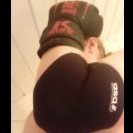Classic Muay Khao vs Size, how controlling distance is essential to the art of Muay Thai
-
Most Recent Topics
-
Latest Comments
-
Hey all, If I hit a heavy bag too hard low down alot or kick pads i'll get a pain in my shins, It dosn't swell up and I assume its just because they arent conditioned enough - however I've been doing muay thai for a good few months and i've taken a month break to heal but the same issue arrises after a couple sessions back to back. is there any proven conditioning techniques besides kicking the bags and pads, is the stick roll worth a try? Thanks 🙂
-
By Kevin von Duuglas-Ittu · Posted
Wayfinding vs transportation or navigation. https://osf.io/preprints/psyarxiv/tp9wr_v4 -
Minerale salt, mentioned above, this with lotsa of K+, Mg+, somewhat lesser of Na+ - may be called for low sodium salt... Its in these they instead of sodium salt, add kalium and magnesium salts.... Useful for both those whom sweats much, and for those on keto.
-
-
The Latest From Open Topics Forum
-
The first fight between Poot Lorlek and Posai Sittiboonlert was recently uploaded to youtube. Posai is one of the earliest great Muay Khao fighters and influential to Dieselnoi, but there's very little footage of him. Poot is one of the GOATs and one of Posai's best wins, it's really cool to see how Posai's style looked against another elite fighter.
-
By FuckedElbow-Muay · Posted
Yeah, this is certainly possible. Thanks! I just like the idea of a training camp pre-fight because of focus and getting more "locked in".. Do you know of any high level gyms in europe you would recommend? -
You could just pick a high-level gym in a European city, just live and train there for however long you want (a month?). Lots of gyms have morning and evening classes.
-
By FuckedElbow-Muay · Posted
Hi, i have a general question concerning Muay-Thai training camps, are there any serious ones in Europe at all? I know there are some for kickboxing in the Netherlands, but that's not interesting to me or what i aim for. I have found some regarding Muay-Thai in google searches, but what iv'e found seem to be only "retreats" with Muay-Thai on a level compareable to fitness-boxing, yoga or mindfullness.. So what i look for, but can't seem to find anywhere, are camps similar to those in Thailand. Grueling, high-intensity workouts with trainers who have actually fought and don't just do this as a hobby/fitness regime. A place where you can actually grow, improve technique and build strength and gas-tank with high intensity, not a vacation... No hate whatsoever to those who do fitness-boxing and attend retreats like these, i just find it VERY ODD that there ain't any training camps like those in Thailand out there, or perhaps i haven't looked good enough?.. Appericiate all responses, thank you! -
In my experience, 1 pair of gloves is fine (14oz in my case, so I can spar safely), just air them out between training (bag gloves definitely not necessary). Shinguards are a good idea, though gyms will always have them and lend them out- just more hygienic to have your own. 2 pairs of wraps, 2 shorts (I like the lightweight Raja ones for the heat), 1 pair of good road running trainers. Good gumshield and groin-protector, naturally. Every time I finish training, I bring everything into the shower (not gloves or shinnies, obviously) with me to clean off the (bucketsfull in my case) of sweat, but things dry off quickly here outside of the monsoon season. One thing I have found I like is smallish, cotton briefs for training (less cloth, therefore sweaty wetness than boxers, etc.- bring underwear from home- decent, cotton stuff is strangely expensive here). Don't weigh yourself down too much. You might want to buy shorts or vests from the gym(s) as (useful) souvenirs. I recommend Action Zone and Keelapan, next door, in Bangkok (good selection and prices): https://www.google.com/maps/place/Action+Zone/@13.7474264,100.5206774,17z/data=!4m14!1m7!3m6!1s0x30e29931ee397e41:0x4c8f06926c37408b!2sAction+Zone!8m2!3d13.7474212!4d100.5232523!16s%2Fg%2F1hm3_f5d2!3m5!1s0x30e29931ee397e41:0x4c8f06926c37408b!8m2!3d13.7474212!4d100.5232523!16s%2Fg%2F1hm3_f5d2?entry=ttu&g_ep=EgoyMDI0MTAyOS4wIKXMDSoASAFQAw%3D%3D
-
-
Forum Statistics
-
Total Topics1.4k
-
Total Posts11.4k
-
Footer title
This content can be configured within your theme settings in your ACP. You can add any HTML including images, paragraphs and lists.
Footer title
This content can be configured within your theme settings in your ACP. You can add any HTML including images, paragraphs and lists.
Footer title
This content can be configured within your theme settings in your ACP. You can add any HTML including images, paragraphs and lists.

Recommended Posts
Create an account or sign in to comment
You need to be a member in order to leave a comment
Create an account
Sign up for a new account in our community. It's easy!
Register a new accountSign in
Already have an account? Sign in here.
Sign In Now